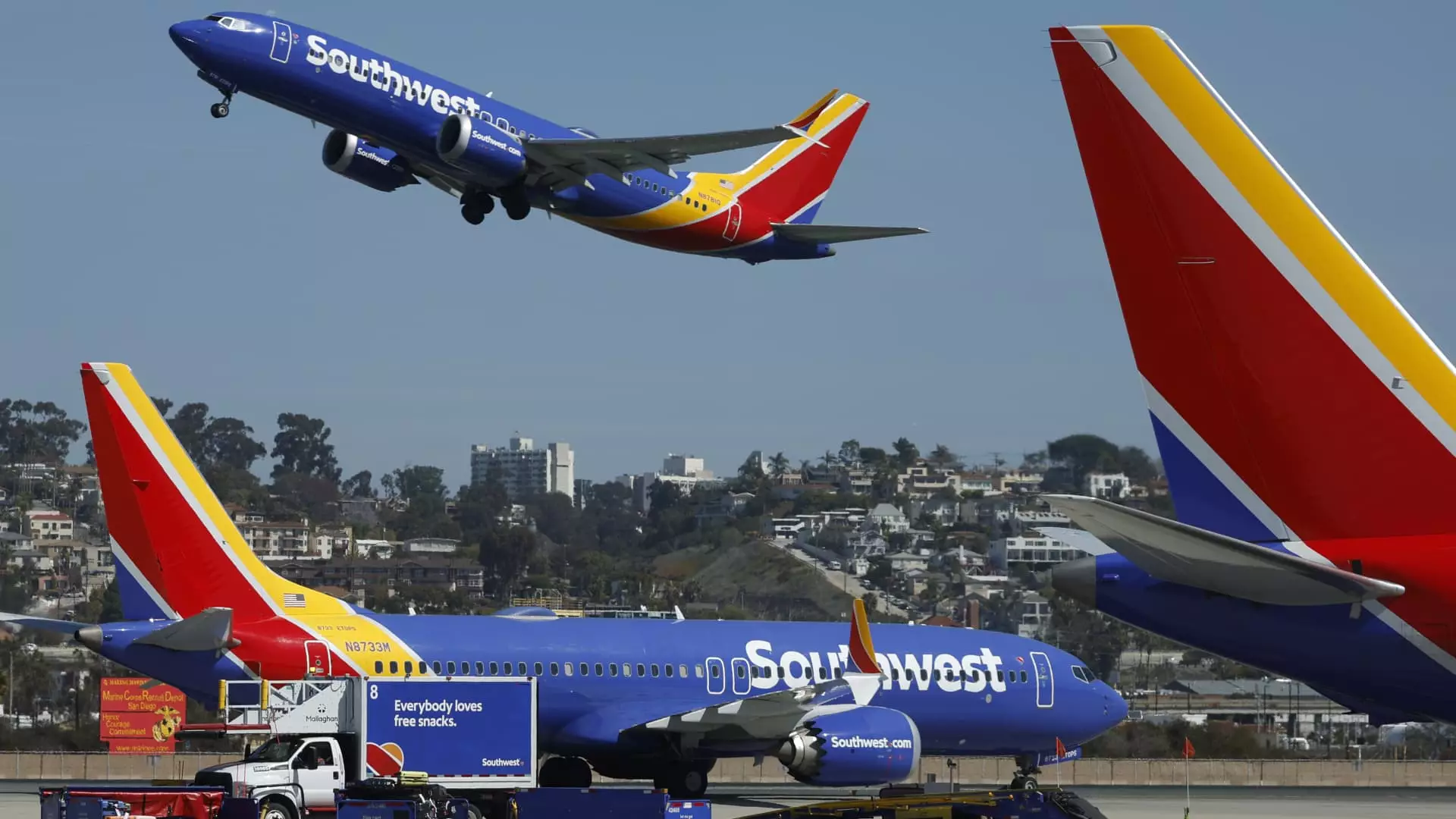In the ever-evolving realm of commercial aviation, airlines navigate the turbulent winds of competition and consumer expectations. Among the players, Southwest Airlines finds itself at a crossroad, where forging ahead necessitates an embrace of the market’s shifting demands. As travelers become increasingly discerning and globalized, the need for substantive changes is critical if Southwest is to retain its audience and avoid being cast aside in favor of competitors eager to cater to high-spending customers.
Luxury and Convenience: The New Gold Standard
The advent of the luxury traveler has shifted our perception of air travel from a mere necessity to an experience. Consumers want to feel pampered, and airlines have realized that a no-frills approach may soon become obsolete. There’s a hunger for premium offerings that range from airport lounges to long-haul international flights. In the words of Southwest’s CEO Bob Jordan, everything must remain on the table. This open-mindedness is precisely the ethos Southwest needs to cultivate in order to capture more premium customers who may otherwise opt for the likes of Delta and United.
As outlined by Jordan, the appetite for lounges and first-class seating isn’t just a demand; it’s a necessity for retaining loyal customers who are glimpsing greener pastures with rival airlines. When competing companies are actively expanding their luxury services—with American Airlines doubling lounge space in Miami, for instance—it’s a clear signal that Southwest cannot afford to remain stagnant. Ignoring this shift could lead to the erosion of their market share, especially in burgeoning markets like Nashville, where customer desires align more with luxury than low-cost travel.
Transformation: Reengineering the Brand
While Southwest Airlines historically prided itself on its open-seating policy, a no-nonsense approach to fees, and an unwavering commitment to simplicity, these attributes are quickly becoming insufficient in a world driven by consumer preference for complexity in offerings. CEO Bob Jordan’s acknowledgment of the need for change is a commendable first step, but what exactly does transformation mean in a practical sense?
Adapting to new expectations requires robust strategies and foresight. It’s not just about adding premium options but also about reconceptualizing what Southwest stands for as an airline. The retrofitting of their brand identity must resonate with high-spending consumers while retaining the existing customer base. It is a delicate balance, yet transforming Southwest into a brand that not only competes with legacy airlines but stands proudly on its own merits could very well redefine its trajectory in the coming years.
Strategic Partnerships: A Double-Edged Sword
In pursuit of international growth, Southwest has already begun tentatively forging partnerships with overseas airlines like Icelandair and China Airlines. However, this endeavor raises questions: Is this a sufficient substitute for the establishment of a robust international fleet? Or is it merely a Band-Aid approach that delays the inevitable need for significant investment?
If Southwest aims to establish itself as a competitive choice for long-haul travel, the time to invest in long-range aircraft is now. The Boeing 737 has served them well, but the notion of obsolete technology in a fast-paced, tech-savvy market could prove detrimental to brand credibility. Expanding routes to Europe and investing in the necessary aircraft would reflect a serious commitment to evolution and customer service.
Keeping Up with Economic Realities
Jordan expressed concerns over economic uncertainties impacting pricing structures, revealing an unexpected shift in some fare patterns. In an age when consumers are more price-sensitive than ever, navigating these challenges while introducing new offerings will require exceptional acumen. The airline industry operates on a precarious economic tightrope, and failure to adequately forecast economic trends could lead to tumbling profits.
As it stands, Southwest Airlines is fighting the good fight, but as economic landscapes become increasingly complex, the company must be vigilant and proactive rather than reactive when it comes to pricing strategies and customer offerings. Their approach to new segments must not only reflect the need for change but must also align seamlessly with the economic realities practitioners face.
Ultimately, Southwest Airlines stands at an inflection point. If it embraces change, prioritizes luxury, and adapts its brand to the marketplace’s evolving demands, it may both retain its current passenger base and attract high-spending travelers. The stakes have never been higher, and Southwest’s ability to navigate these changes will determine its place in the annals of aviation’s future.

